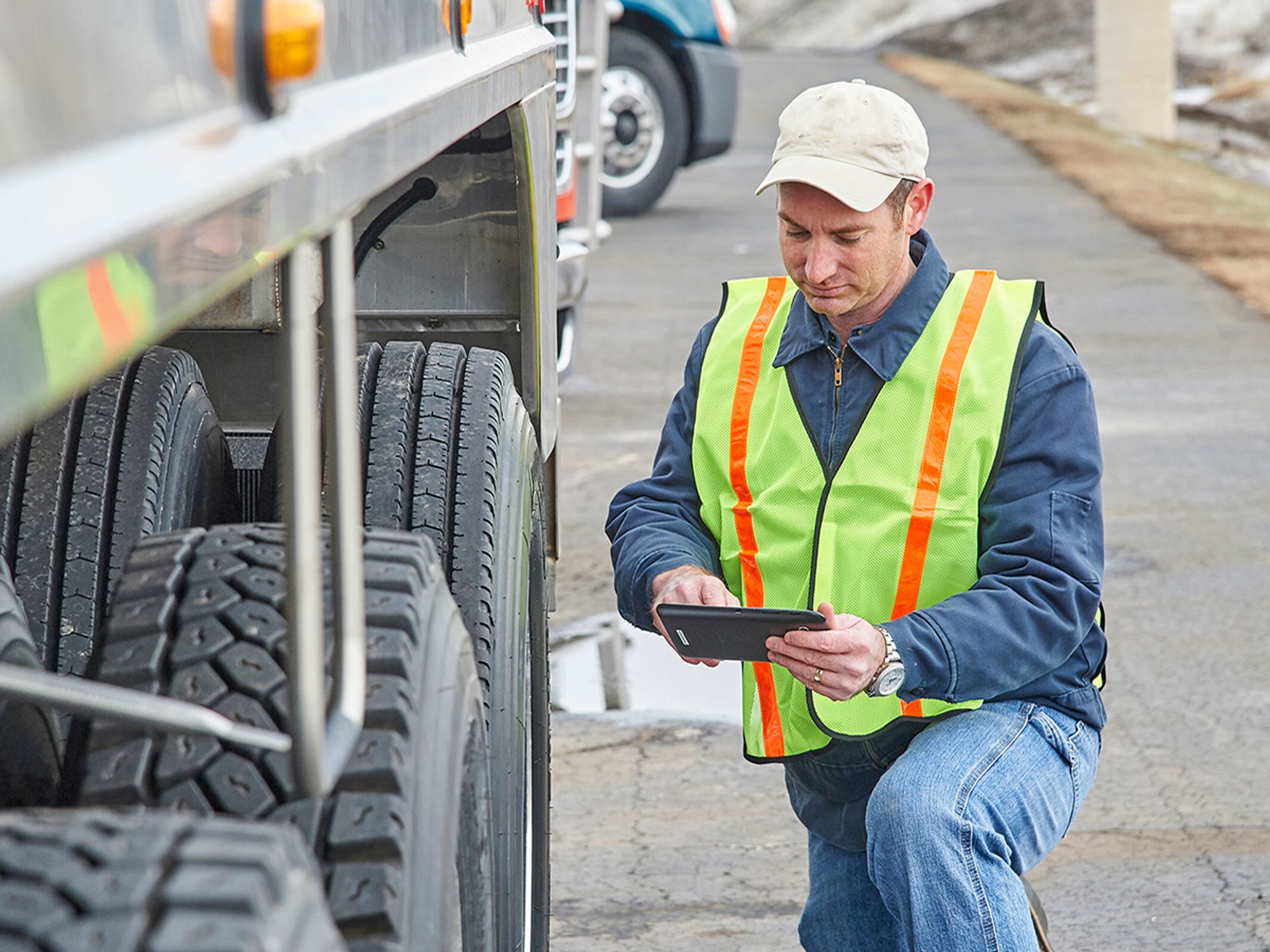InstituteFleet SafetyFood transportationFood transportationTransportationFocus AreaEnglishAnalysisIn Depth Sub Topics (Level 4)USA
Additional inspection steps for a refrigerated trailer
['Food transportation']

- Trailers transporting temperature-controlled or temperature-sensitive product must receive a thorough inspection process.
- Inspections should be performed at each level of a shipment, including pretrip, on-the-road, and post-trip stages.
In addition to checking the items on a standard van trailer, the following steps should be taken for refrigerated trailers.
Pretrip inspection
Before each trip:
- Ensure that trailer specifications meet shipper requirements (an example is “no wood floors”);
- Inspect the trailer to verify that it has been cleaned and sanitized to the shipper’s standards;
- Do not load the trailer unless all defects from the Driver Vehicle Inspection Report (DVIR), including those related to the refrigeration system, are repaired; and
- During the walk-around inspection, open the refrigeration unit on the front of the trailer and:
- Look over the belts, hoses, and connections to verify that no potential issues could lead to failure; and
- Make sure the fluids are at appropriate levels to avoid an automatic shutdown of the refrigeration system engine due to low oil or water.
- After checking that the landing gear is in good working order, check the fuel tank and:
- Inspect the tank for damage,
- Ensure there is adequate fuel in the tank,
- Confirm the cap is in place and tight,
- Make sure the gasket or seal is in good condition,
- Verify the mounting straps are secure, and
- Check the fuel tank for leaks.
- As the walk-around continues, check for cracks, dents, holes, or other damage that could affect the ability to maintain the set point (exact thermostat temperature set);
- Open the trailer doors, inspect the interior of the trailer, and:
- Confirm that the trailer has the proper amount of insulation and can meet the required set point of the load;
- Inspect the trailer for debris or spills and check for odors (wash and/or sanitize the trailer if cross-contamination is possible);
- Make sure floor channels and drains are clear and not clogged with debris;
- If the trailer is equipped with an air chute (or canopy), check that it is in good condition and that air flow will not be affected;
- Check for holes or cracks in interior walls to see if any insulation is exposed; and
- Check that rear/side doors and vent doors close properly and that each door has intact gaskets that seal tightly.
- After the walk-around is complete, verify the refrigeration compartment is closed, start the unit, and:
- Adjust the thermostat and make sure the cooling or heating cycle is activated when the current set point is changed;
- If pre-cooling is required for the next shipment, adjust the set point per the shipper’s instructions; and
- Make sure that both “run” modes —, continuous (used for narrow temperature range or continuous air flow) and start/stop (used when products are not as temperature-sensitive) — operate correctly. Use the mode per the shipper’s instructions, if available, or consult dispatch for the correct mode.
On-the-road inspections
Some carriers and shippers will require the driver to stop at specific intervals. When stopped:
- If required, record the temperature in a temperature log and be aware of changes in temperature, and actions to be taken if required;
- Do a walk-around inspection of the vehicle;
- Check the fuel level in the refrigeration system tank and confirm that it will run until well after the next fuel stop; and
- Check the security seal/tag on the trailer door to ensure the integrity of the load has not been breached.
Post-trip inspections
In addition to the post-trip checks, after each trip:
- Check all refrigerated trailer-specific items inspected in the pretrip, except those affected by heat (such as refrigeration system engine oil);
- Do not shut off the refrigeration system engine unless directed by the shipper or carrier, and be clear on when to shut down the refrigeration system;
- If the company wants the refrigeration system shut down to check the oil and other fluids, immediately restart the unit after checks are complete; and
- If there are any defects that can affect the safe or efficient operation of the refrigeration unit, include those items on the DVIR along with any defects found during the checks on Driver Handout #2. Do not load the trailer until these defects are repaired.
